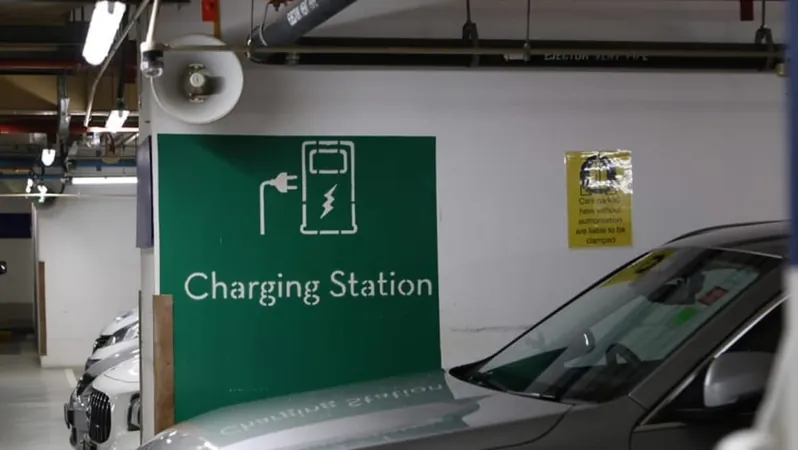
COE Premiums Surge: What’s Fueling the Rise and Will It Last?
2025-08-21
Author: Arjun
Unprecedented COE Premiums in Singapore
In Singapore, residents are feeling the sting of soaring Certificate of Entitlement (COE) premiums, now at their highest levels in nearly two years. With Category A premiums hitting S$104,524 (approximately US$81,300) in the latest bidding round and larger Category B vehicles not far behind at S$124,400, many are left wondering where this trend will lead.
The Role of Chinese Electric Vehicles
Experts reveal that the surge in demand for affordable Chinese electric vehicles (EVs), combined with rising household incomes, is a key factor driving up COE costs. Associate Professor Walter Theseira from the Singapore University of Social Sciences notes that these EVs offer excellent value, boosted by government subsidies that can slash prices by up to S$40,000. This attractive pricing is making potential car buyers more willing to absorb high COE costs.
Economic Optimism Inspires Purchases
Additionally, buoyant economic prospects are encouraging purchases among Singaporeans. Despite potential global trade disruptions, the local GDP is on the rise, giving consumers confidence to invest in new vehicles. Transport analyst Dr. Terence Fan emphasizes that as long as residents feel positive about their economic future, they are likely to continue spending on cars.
Why Haven't COE Supplies Eased Prices?
You might wonder, with COE supply increasing, why hasn't this alleviated the high premiums? According to Assoc Prof Theseira, while there has been growth in COE quotas, they remain significantly below historical peaks. Prior to 2014, COE availability languished below 400 for Category A in each bidding round. Even though supply has improved in recent years, it's still insufficient to counteract the current demand surge.
Government Strategies to Manage Prices
To stabilize the fluctuating COE market, the government has employed strategies like the cut-and-fill approach and COE injections. These measures aim to smooth supply without altering the zero-vehicle growth policy. Experts like Assoc Prof Raymond Ong highlight that while premiums have slightly increased, they have remained relatively stable due to these interventions.
Future of COE Premiums: What Lies Ahead?
Looking ahead, forecasts about COE prices diverge. Assoc Prof Theseira believes that as the 10-year COE cycle progresses, prices may see a drop by the end of the decade, similar to trends seen in the 2010s. Conversely, some analysts caution that with rising incomes and sustained demand, any significant decrease in COE premiums may be unlikely in the short term.
Conclusion: Timing Your Purchase
As the market continues to evolve, potential car buyers who can afford to wait might benefit from lower prices in the future. However, with ongoing demand and a gradually growing population, COE premiums could remain elevated for the foreseeable future. For now, the landscape remains complex, requiring careful consideration from those looking to invest in vehicles.


 Brasil (PT)
Brasil (PT)
 Canada (EN)
Canada (EN)
 Chile (ES)
Chile (ES)
 Česko (CS)
Česko (CS)
 대한민국 (KO)
대한민국 (KO)
 España (ES)
España (ES)
 France (FR)
France (FR)
 Hong Kong (EN)
Hong Kong (EN)
 Italia (IT)
Italia (IT)
 日本 (JA)
日本 (JA)
 Magyarország (HU)
Magyarország (HU)
 Norge (NO)
Norge (NO)
 Polska (PL)
Polska (PL)
 Schweiz (DE)
Schweiz (DE)
 Singapore (EN)
Singapore (EN)
 Sverige (SV)
Sverige (SV)
 Suomi (FI)
Suomi (FI)
 Türkiye (TR)
Türkiye (TR)
 الإمارات العربية المتحدة (AR)
الإمارات العربية المتحدة (AR)